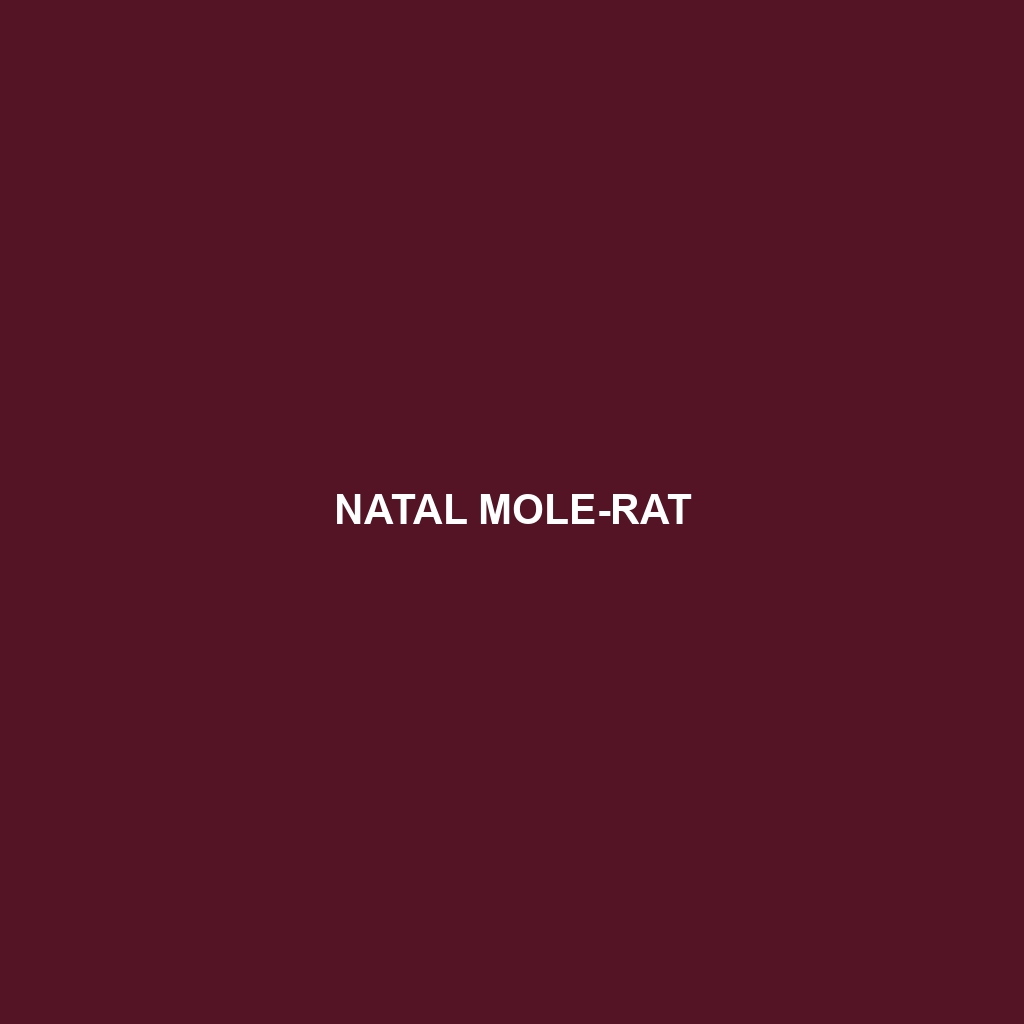Natal Mole-rat Species Description
Common Name: Natal Mole-rat
Scientific Name: Cryptomys hottentotus
Habitat: The Natal Mole-rat is primarily found in southeastern Africa, particularly in regions such as South Africa, Swaziland, and Mozambique. This species thrives in grasslands, savannas, and agricultural lands where they dig extensive burrow systems that provide shelter and access to their food sources. Their preference for loamy soils helps facilitate tunneling activities.
Physical Characteristics: Natal Mole-rats are medium-sized rodents, measuring approximately 20 to 30 centimeters in length. They have a robust body covered with short, coarse fur that is typically brown or grayish in color, helping them blend into their environment. Notable distinctive features include their large incisors, which are adapted for digging, and their short, hairless tails. Their strong forelimbs are well-suited for burrowing.
Behavior: Known for their social nature, Natal Mole-rats often live in colonies that can consist of up to 20 individuals. Their behavior includes extensive burrowing and communal activities, such as grooming and foraging together. These mammals are mostly crepuscular, active during dawn and dusk, and they exhibit strong territoriality, marking their tunnels with secretions.
Diet: The diet of the Natal Mole-rat primarily consists of underground plant tubers and roots. They have also been observed feeding on seeds and green vegetation. Their foraging habits include extensive digging to access food sources, which plays a crucial role in soil aeration and nutrition within their ecosystem. Their diet and nutritional requirements make them vital contributors to their habitat’s health.
Reproduction: Natal Mole-rats typically breed throughout the year, with peak breeding seasons occurring in the spring and summer months. Females typically give birth to 2 to 6 offspring after a gestation period of about 4 weeks. The young are born hairless and depend on their mothers for nourishment until they become independent at around 4 weeks old. Parental care is shared within colony members, which enhances offspring survival.
Conservation Status: Currently, the Natal Mole-rat is listed as ‘Least Concern’ by the IUCN Red List, but its habitat is threatened by agricultural expansion and urban development. Although not considered endangered, localized populations face challenges due to habitat destruction. Conservation efforts are essential to maintain healthy populations of this unique species.
Interesting Facts: One of the most fascinating aspects of the Natal Mole-rat is their complex social structure. They exhibit cooperative breeding, where non-breeding members of the colony help care for the young. Additionally, Natal Mole-rats have a specialized respiratory system that allows them to thrive in underground tunnels with low oxygen levels, making them exceptionally adapted to their burrowing lifestyle.
Role in Ecosystem: The Natal Mole-rat plays a vital role in its ecosystem by aerating the soil through their extensive burrowing activities. This behavior promotes the growth of plants and maintains soil health. Additionally, they serve as prey for various predators, contributing to the biodiversity and food web within their habitat. Their foraging habits help in nutrient cycling, benefiting many other species in the environment.
